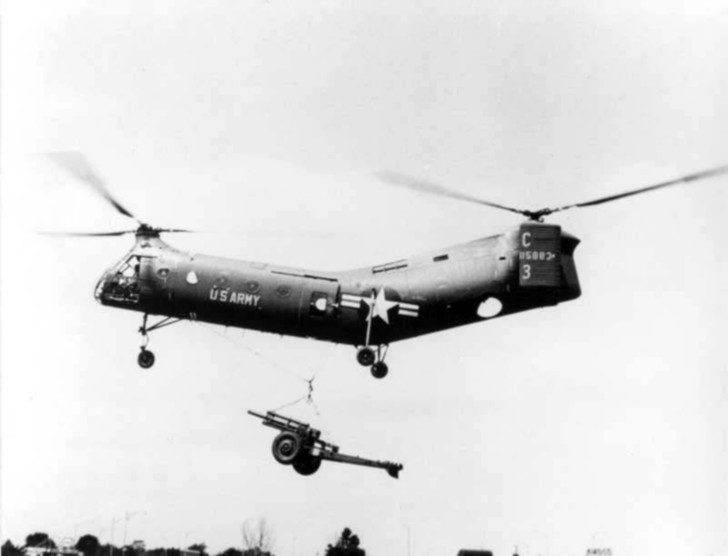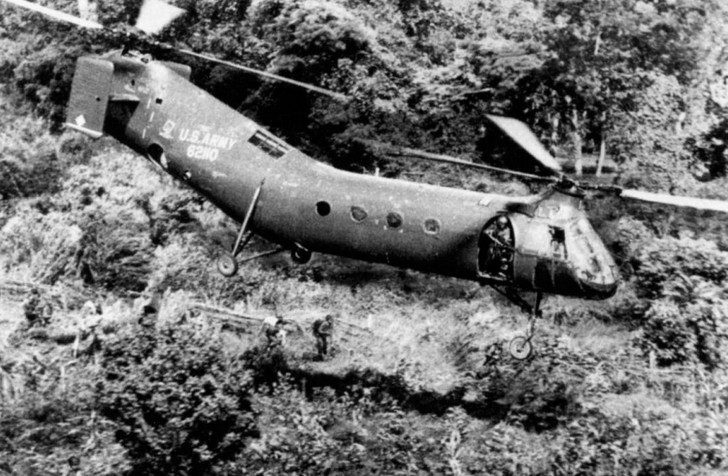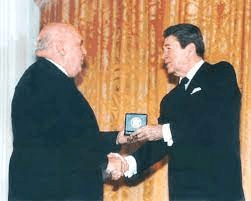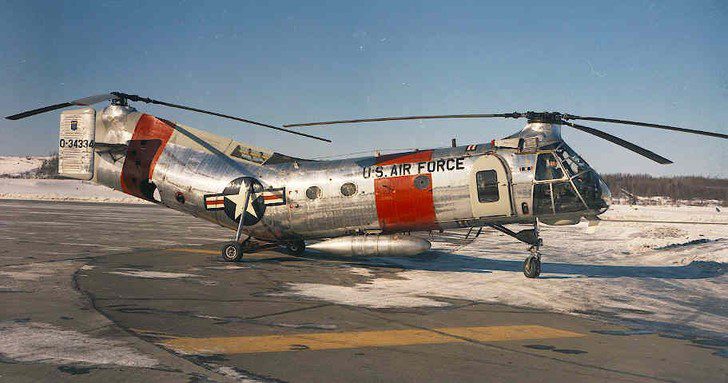In the history of aviation, the American engineer and test pilot of rotorcraft, Frank Piasecki, is primarily known as a pioneer who developed tandem-rotor helicopters. He installed the rotors both in the nose and tail sections of his helicopters. Was it a good idea, and why did his most famous helicopters people call bananas? Find out more at philadelphia-future.
Towed his helicopter with a car for the inspection
The future engineer and inventor Frank Nicolas Piasecki was born on October 24, 1919, in Philadelphia, Pennsylvania. His father was a Polish immigrant who worked as a tailor. The boy was not interested in garment making. From an early age, he was fascinated by aircraft. While still at school, the boy had the opportunity to work for rotorcraft manufacturers, which allowed him to take a step closer to his dream. In 1939, the young man graduated from the University of Pennsylvania, where he mastered mechanical engineering. Later, he completed aeronautical school at New York University.
From 1936 to 1940, Piasecki worked as a mechanic and an aerodynamicist for several companies, including the Platt-LePage Aircraft Company, where he designed a twin-rotor helicopter. Together with his fellow student Harold Venzie, he founded the company PV Engineering Forum in 1943. Other partners also joined them later. Their first development, the PV-1 helicopter, was not very successful.

Piasetsky’s helicopter transports a howitzer.
The next development, the PV-2, proved to be much better. This single-seat, single-rotor helicopter first took to the sky on April 11, 1943. It gained fame as the second helicopter in the United States at that time. The inventor, Frank Piasetsky, had almost no piloting experience back then. It is said that in October 1943, he towed his helicopter with the help of his car to Washington so that representatives of the federal government could see his work. Frank had to stop every 10-15 minutes because the wheels of his aircraft, which moved on a solid surface, lacked bearings and required periodic cooling. In Washington, the inventor was allegedly asked to present his helicopter pilot’s license. He admitted that he did not have such a document… Soon after, Piasetsky was issued a license. But the most important thing is that he and his helicopter made a good impression on the military authorities of the United States. The inventor convinced them that the “winged” idea was worth funding. As a result of the meeting, an official contract was signed for further development. Signed on January 1, 1944, the document became the starting point for the design and production of a series of tandem-rotor helicopters for the Navy. At that time, the talented engineer Frank Piasetsky was only 24 years old!
Proposed a revolutionary concept
Piasecki’s next helicopter, the PV-3, became the world’s first successful production tandem-rotor helicopter. Its first flight took place on March 7, 1945. The aircraft had the fleet marking XHRP-X. It was of considerable size and had the ability to lift a considerable weight.
In 1946, PV Engineering Forum was reorganized and renamed Piasecki Helicopter Corporation. In 1947, after producing two more prototypes (XHRP-1 helicopters), the PV-3 model entered production as the XRP-1. Over time, this helicopter became popularly known as the “flying banana.” The fact is that Piasecki proposed to the military a revolutionary concept of a helicopter with a vertically curved fuselage shape (resembling a banana) and two rotors located in the nose and tail parts of the fuselage. Thus, they rotated at a safe distance to avoid contact. The popular name was also influenced by the fact that the Coast Guard used the helicopter for rescue operations and painted it yellow to make it visible from a long distance. Later, the “banana” name was applied to other Piasecki helicopters of similar design.
Next, the XRP-2 design appeared, made of a solid metal “skin.” The crew seats were placed side by side instead of one behind the other. However, limited power resulted in a restricted production of these helicopters for the Coast Guard.
In 1949, Piasecki proposed to the U.S. Air Force to develop an updated version of the HRP-2. The H-21 helicopter took to the skies in 1952. It is worth noting that Piasecki’s tandem-rotor helicopters could fly higher and more smoothly than their single-rotor competitors.
At one point, the Navy also commissioned Piasecki to design a smaller utility helicopter with tandem rotors. These aircraft went into production as the HUP-1 (PV-18). The first versions of these helicopters were delivered to the American Army in 1949. In total, about 340 helicopters had been sent to the U.S., Canada and France by 1954. The HUP was designed with overlapping blades of the main rotor, which reduced the size of the helicopters and allowed them to be transported on aircraft carrier elevators.
Interesting facts about the legendary “flying banana”
As mentioned earlier, the group of similar-looking helicopter models of Frank Piasecki, led by the most popular H-21, was called “flying banana” due to the specific shape of its fuselage. In total, 707 H-21 helicopters were manufactured, with 150 of them exported. In general, “bananas” of various models have successfully proven themselves. In fact, the H-21 was one of the first high-quality cargo helicopters (payload of about a ton, capacity on board – up to 20 people). It was in service with the U.S. Air Force and Coast Guard. These helicopters were also the first ones deployed by Americans in military operations in Korea and Vietnam. However, they proved to be not so fast and maneuverable in combat zones, making them easy targets for the enemy due to their visibility. Air operations in Vietnam were successful until the enemy learned the tactics of helicopters and their shortcomings. It was the H-21, which transported soldiers, that became the first helicopter shot down in Vietnam in 1962.

At the same time, the H-21 also had some good records. In 1957, it became the first helicopter to complete a non-stop transcontinental flight across the United States. It took off from San Diego, California, and with four refueling stops, reached Washington in 31 hours and 40 minutes.

Photo: U.S. President Ronald Reagan presents a prestigious award to Frank Piasecki
Once, Piasecki had a conflict with the company’s board of directors, after which he left Piasecki Helicopter and founded Piasecki Aircraft Corporation in 1956. There, he was engaged in the manufacturing and testing of aerial platforms, helicopters and a helicostat (a hybrid of an airship and a helicopter).
In 1956, Piasecki Helicopter was renamed the Vertol Aircraft Corporation. This was followed by new ideas and developments, including efficient cooperation with the U.S. Army. In 1960, Vertol was acquired by Boeing and became its division (in 1987, Boeing was renamed Boeing Helicopter).
Throughout his prolific career, Frank Piasecki constructed such well-known helicopters as the H-25, H-21, H-46 Sea Knight and H-47 Chinook, based on which a passenger version has been designed. The designer also worked on other famous helicopters, as well as a heavy vertical airlifter.

Photo: Transport helicopter Boeing CH‑47 Chinook
Frank was married to Vivian O’Gara Weyerhaeuser, with whom he raised seven children. The inventor died at the age of 88 at his home in 2008 due to a heart attack. His descendants inherited his love for aviation. His son Fred and daughter Nicole continued their father’s work.
During his lifetime, Frank Piasecki received a number of significant awards. In 1979, he was awarded the Philip H. Ward, Jr. Medal (an award for scientists and engineers from the Franklin Institute). In 1986, he became the recipient of the highest technical award in the country, the National Medal of Technology and Innovation, presented by President Ronald Reagan. In 2005, the designer was honored by the National Air and Space Museum, a division of the Smithsonian Institution.